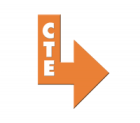Omni Aerospace needed to produce large, flight-ready parts within strict design tolerances and surface finishes in a time-sensitive manner.
To create these large, heavy parts, Omni, which designs and manufacturers complex metal components for companies like Boeing and the Department of Defense, turned to Starrag and its Ecospeed F1540 machining centers.
The F1540’s accurately machine complex aluminum structural parts with payloads up to three-tons and delivers a high surface finish that requires no hand finishing.
“We took our company to the next level by investing in technology equipment that can do things other people can’t do with their equipment,” said company founder and CEO John J. O’Neill in a YouTube feature on Omni.
Omni has two Ecospeed F1540 machines integrated into an automated Flexible Manufacturing Systems (FMS). Machining operations include surfacing, pocketing and drilling on parts such as wing ribs that are made from aluminum or aluminum/lithium alloys. Each wing rib starts life as a billet, weighing up to 6,000 lb. (2,727 kg) with dimensions up to nearly 13’ x 5’ (4,000mm x 1,500mm) in width and up to 6” (152mm) thick. Finish machined components can have as much as 95% the metal removed.
The Ecospeed’s main spindle motor performance plays a key role in machining OMNI’s complex components. Rated at 161 hp, it can run nonstop at 30,000 revolutions/minute in S1 mode – coupled with the machine’s high dynamic capabilities (acceleration of up to 1 g in all axes and jerk up to 7,063 ft/s3 (200 m/s3)). While roughing, the F1540 machine can fill a 55-gal drum with chips in less than a minute.
The machining centers features a Sprint Z3 parallel kinematic machining head, which boosts the machine’s ability for highly-dynamic, simultaneous 5-axis/5-sided milling. The head uses three parallel linear axes drives mounted radially equally spaced in the headstock. The spindle platform is connected to each drive via rigid levers with a pivot at one end and a ball joint at the other.
When all three axes move equally and simultaneously, the spindle is moved in a straight line in the Z-axis. If the three axes move differentially, the spindle platform will be tilted in the A/B kinematic, allowing the spindle to follow any path within a spherical cone of ±45 degrees at a maximum of 80 degrees/second. When equipped with the automatically loaded and tool changeable right-angle head, the Starrag Ecospeed will have ±135 degrees through axis travel.
Each machine has an integral C-axis to allow the use of automatically interchangeable angular milling heads which operate at any spatial angle between -135 degrees to 135 degrees.
O’Neill said that with the technology Omni can meet any challenge or part complexity. “Omni can now exceed our customers’ expectations.”
For more information on the Starrag Group and its products, phone 859-534-5201 or visit them at www.starrag.com.
Contact Details
Related Glossary Terms
- alloys
alloys
Substances having metallic properties and being composed of two or more chemical elements of which at least one is a metal.
- centers
centers
Cone-shaped pins that support a workpiece by one or two ends during machining. The centers fit into holes drilled in the workpiece ends. Centers that turn with the workpiece are called “live” centers; those that do not are called “dead” centers.
- gang cutting ( milling)
gang cutting ( milling)
Machining with several cutters mounted on a single arbor, generally for simultaneous cutting.
- milling
milling
Machining operation in which metal or other material is removed by applying power to a rotating cutter. In vertical milling, the cutting tool is mounted vertically on the spindle. In horizontal milling, the cutting tool is mounted horizontally, either directly on the spindle or on an arbor. Horizontal milling is further broken down into conventional milling, where the cutter rotates opposite the direction of feed, or “up” into the workpiece; and climb milling, where the cutter rotates in the direction of feed, or “down” into the workpiece. Milling operations include plane or surface milling, endmilling, facemilling, angle milling, form milling and profiling.
- parallel
parallel
Strip or block of precision-ground stock used to elevate a workpiece, while keeping it parallel to the worktable, to prevent cutter/table contact.


